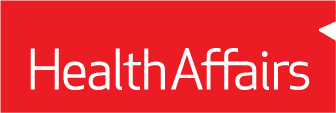
By Sean Dickson
June 21, 2022
The manufacturing of generic drugs has been extremely successful at contributing to reduced drug prices and increased medication adherence. A 2019 Center for Drug Evaluation and Research report found that once two generic manufacturers enter the market, prices fall to below half of the brand prices. As more generics enter the market, prices continue to drop up to 95 percent when there are six or more competitors. Following generic entry, more patients are able to remain adherent to their treatment regimens, reducing the mortality associated with cost-related non-adherence. These successes come at a cost to brand drug manufacturers—they no longer have monopoly control over a market, eliminating their ability to set prices far above the actual value of a drug, much less its actual cost of production. To maintain profits on drugs that have already been developed, brand manufacturers invest significant effort in preventing generic competition, most notably by building a “patent thicket,” which generic manufacturers must mow down before the Food and Drug Administration (FDA) can approve a generic application. In the pharmaceutical sector, an outstanding patent that has not been defeated is a categorical bar to the introduction of a competing product—a different situation from other sectors that rely on research and innovation, where a competing product can come to market even if it infringes on existing patents and damages can rectify any infringement. Reforming the nature of patent enforcement in the pharmaceutical sector to more closely resemble other innovative sectors while limiting infringement damages would hasten the introduction of new generic drugs, reducing drug spending and increasing patient access to therapy.
Pharmaceutical Patent Enforcement Versus Other Industries
The Drug Price Competition and Patent Term Restoration Act of 1984, also known as the Hatch-Waxman Act, established a pathway for the approval of generic drugs. Under this act, manufacturers submitting generic drug applications are required to make a Paragraph IV certification, stating that the proposed generic drug will not infringe on any patent that the brand manufacturer claims applies to the existing drug.
The Paragraph IV certification requirement has two implications: First, it encourages brand manufacturers to claim as many patents as possible apply to their products, as each one must be defeated. And second, it requires generic manufacturers to bear the burden of proving that claimed patents are not infringed by the proposed generic drug before the drug even comes to market. Notably, the involvement of the FDA in pharmaceutical patent enforcement inverts the approach to patent enforcement in all other industries, where the patent holder must prove that a competing product infringes on existing patents. Even then, the most likely outcome of an infringement finding is an award of damages, not a complete ban on the marketing of the competing product. The pharmaceutical industry is unique, then, in both its presumption that any possible patent infringement requires a complete ban of competitors and its placement of the litigation burden on the competing product, not the originator product.
Relying on generic manufacturers for the burden of proof has serious repercussions. When a brand drug is approved, presumably the patents that are essential to the drug’s innovation and manufacturing should already be in place, as the drug is now a final product. However, brand drug manufacturers routinely file numerous patents after a drug has already been approved, all of which must be defeated by generic manufacturers before they can proceed with their generic drug application. Among the most notorious of these cases is Abbvie’s Imbruvica, used to treat a variety of cancers. Imbruvica was approved in 2013 and, according to one analysis, has 165 filed patent applications, 55 percent of which were filed after FDA approval. These post-approval patents are estimated to extend Imbruvica’s monopoly for an additional nine years, generating $41 billion dollars of spending—and even more patents could still be filed. Indeed, while other provisions of the Hatch-Waxman Act give brand manufacturers defined periods of market exclusivity (ranging from five to nine years, depending on the drug), patents extend brand market exclusivity far beyond that period. Among the 12 top-selling treatments in 2018, manufacturers claimed an average of 38 years of patent protection, far beyond the 20 years of protection an individual patent offers.

